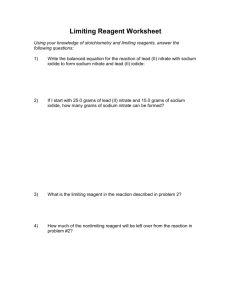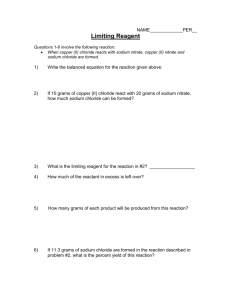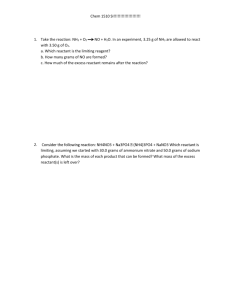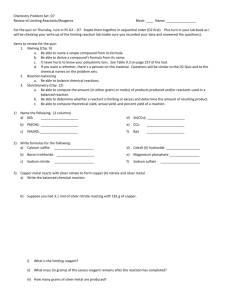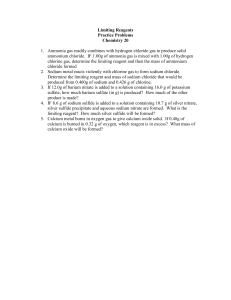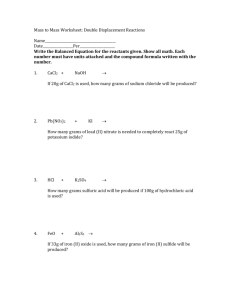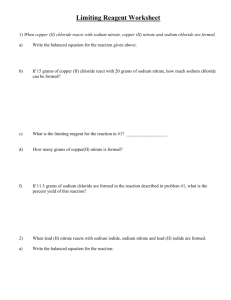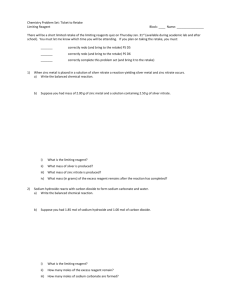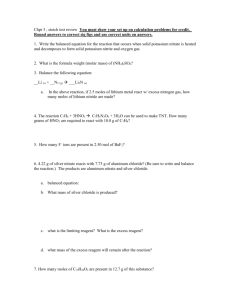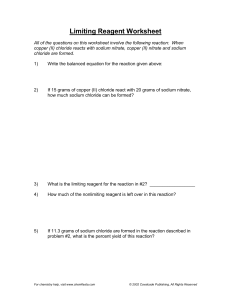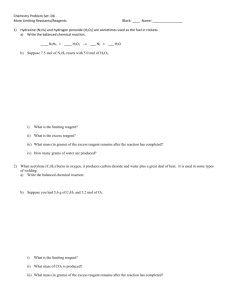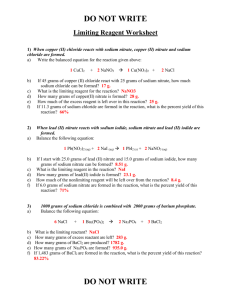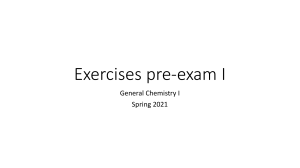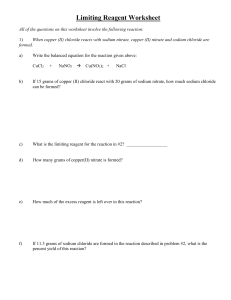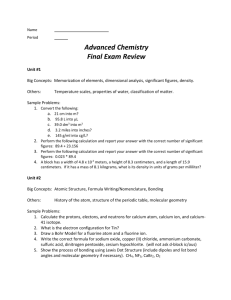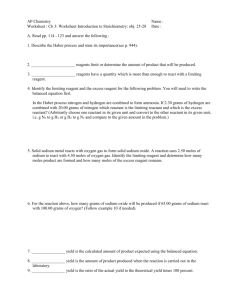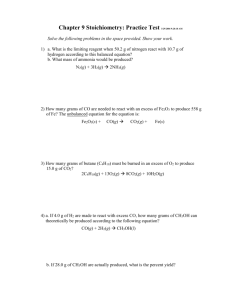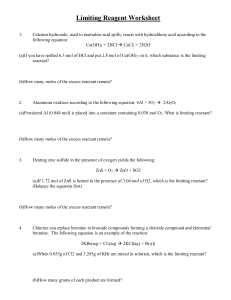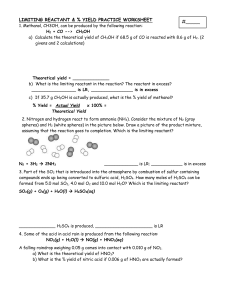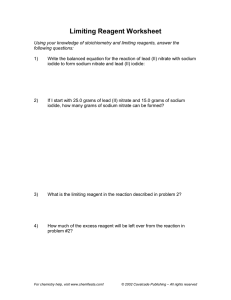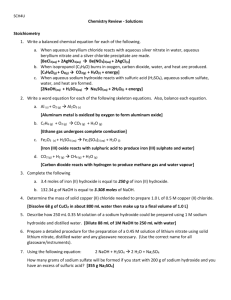doc
advertisement
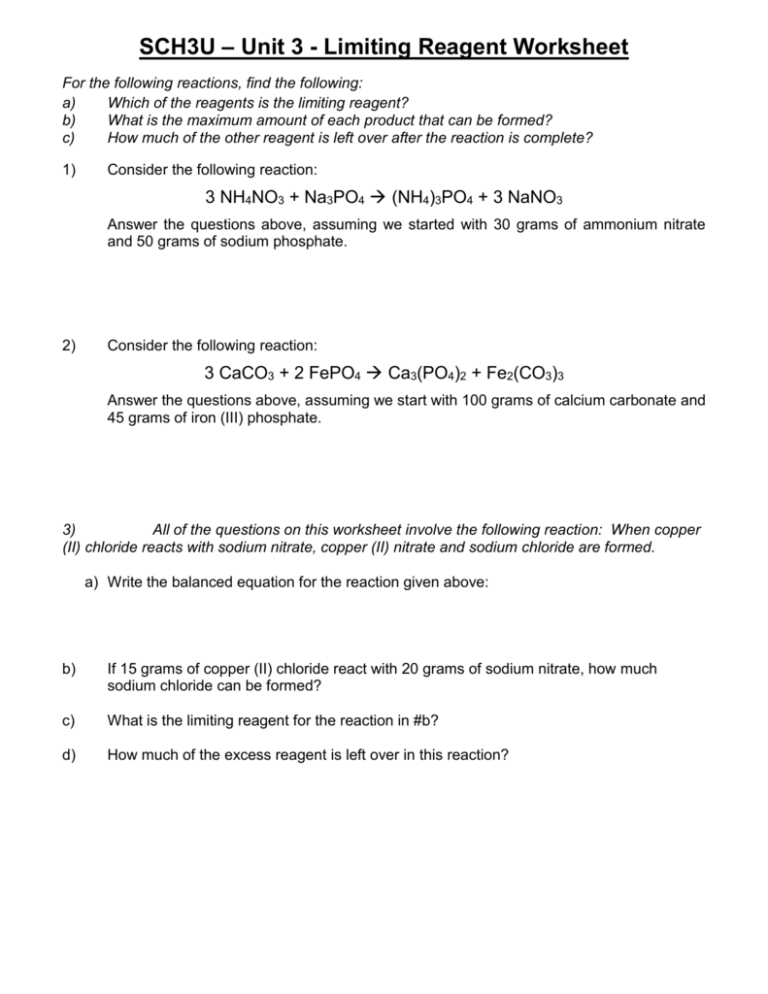
SCH3U – Unit 3 - Limiting Reagent Worksheet For the following reactions, find the following: a) Which of the reagents is the limiting reagent? b) What is the maximum amount of each product that can be formed? c) How much of the other reagent is left over after the reaction is complete? 1) Consider the following reaction: 3 NH4NO3 + Na3PO4 (NH4)3PO4 + 3 NaNO3 Answer the questions above, assuming we started with 30 grams of ammonium nitrate and 50 grams of sodium phosphate. 2) Consider the following reaction: 3 CaCO3 + 2 FePO4 Ca3(PO4)2 + Fe2(CO3)3 Answer the questions above, assuming we start with 100 grams of calcium carbonate and 45 grams of iron (III) phosphate. 3) All of the questions on this worksheet involve the following reaction: When copper (II) chloride reacts with sodium nitrate, copper (II) nitrate and sodium chloride are formed. a) Write the balanced equation for the reaction given above: b) If 15 grams of copper (II) chloride react with 20 grams of sodium nitrate, how much sodium chloride can be formed? c) What is the limiting reagent for the reaction in #b? d) How much of the excess reagent is left over in this reaction?

